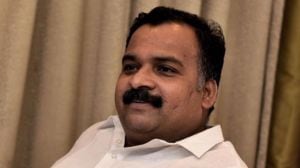Coming to the path
We were spared the sort of guru search that one hears about in the case of some seekers. What we had done to deserve this is difficult to ...

We were spared the sort of guru search that one hears about in the case of some seekers. What we had done to deserve this is difficult to ascertain. 8220;I don8217;t care whether you get into this train here or elsewhere, as long as you catch it somewhere,8221; Ashish Da our guru had once told a young man who was discussing with him a dream in which he was about to board a train.
Mirtola,8217; the station where we boarded the train8217; is a small revenue village situated in the Kumaon hills of the Himalayas. About seventy years ago an ashram8217; literally hermitage, abode of ascetics8217; was established there by Yashoda Mai. It is centered around the temple consecrated to Krishna and Radha Rani. Besides the deities, the only other residents of this village are the Sadhaks8217; seekers connected with the place and with the Guru by a psychic commitment to the inner path.
Yashoda Mai was the wife of G.N. Chakravarti, the first vice-chancellor of Lucknow University. Her earlier name was Monica. She was a devotee of Krishna while her husband was a well-known theosophist of his time.
Circumstances brought a young Englishman named Ronald Nixon in contact with the Chakravartis. He had served as a fighter pilot in the First World War and later took a degree from Cambridge University.
Driven by his inner urge, he came to India as a lecturer in the Department of English of the newly established University. Very soon he was accepted as a resident member of the Vice-Chancellor8217;s family. In due course Monica took sanyas8217; renunciation under the name of Yashoda Ma and Nixon followed as her disciple with the name of Sri Krishna Prem. Ma called him Gopal the fond, household name of Krishna and thus in the Mirtola family he is referred to as Gopal Da. Together, they established the Ashram at Mirtola. Ma died in 1944 and Gopal Da in 1965.
Our guru Sri Madhav Ashish called Ashish Da by everybody who got to know him well was nominated by Gopal Da as his successor. He fitted into the guru tradition of the ashram very naturally. This threesome exemplified and taught a truly universal, secular and dynamic spirituality 8212; something that cannot be covered by any known cultist label.
8220;Thakur caught me by the scruff of my neck and brought me here8221; said Ashish Da about his coming all the way from England and settling down in that remote Kumaon village. This has also been done to many others. These strange goings on all around come from the mischief that He does8217; 8212; as a poet has said.
The Buddhist approach of this happening, that follows8217; may be equally applicable to such happenings but the earlier, Vaishnav kind of view appears more delightful. There are undoubtedly powers and presences8217; that help all aspirants all the time, often in ways beyond our comprehension. Kripa grace, help from above, is a fact. And so is the unavoidable requirement that the aspirant should make the initial effort himself. Unless it is knocked at, the door won8217;t open. If we wish to receive the Buddha8217;s help we must light our lamp. The chela has to be ready for the guru to appear. Initiation follows self-initiation. The act of choice8217; and the act of grace8217; do meet at a point.
It is great good fortune to find a living teacher who besides helping with his sheer presence, also speaks to us in a language that we understand. Thus the legendary king of birds, Garuda, when he approached Lord Shiva for knowledge, and was directed by Him to another bird because a bird will understand better the language of another bird.8217;
The writer is a retired IPS official who has lived at Mirtola ashram with his wife for many years
- 01
- 02
- 03
- 04
- 05































